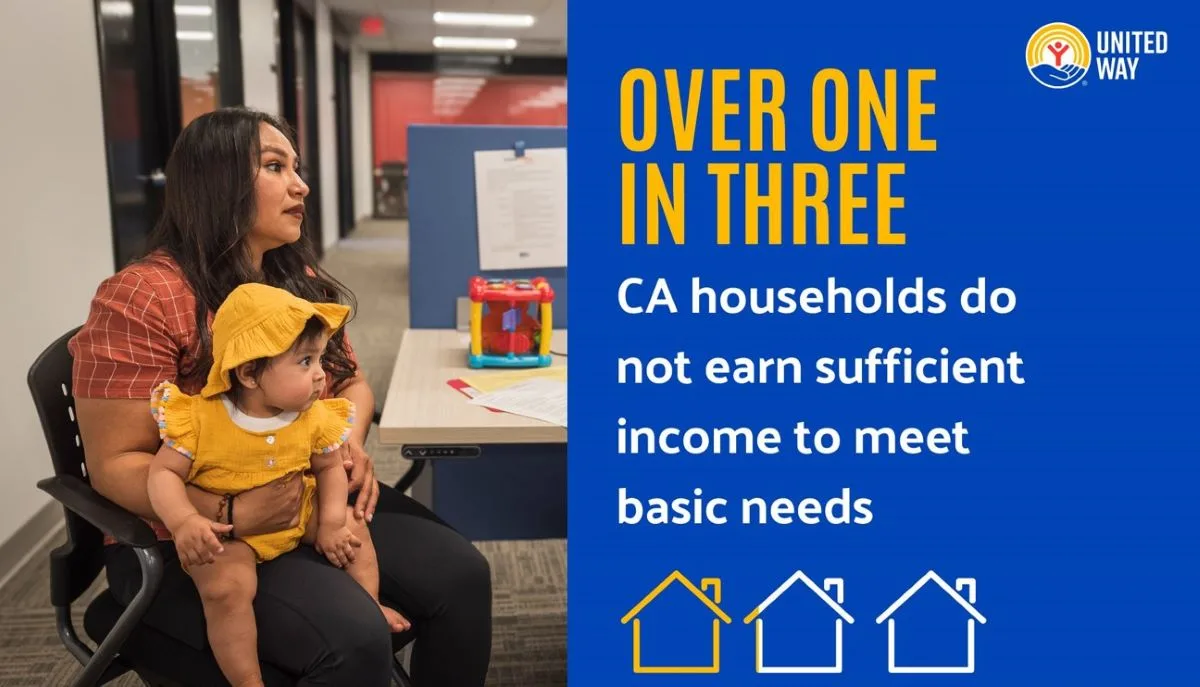United Ways of California released The Real Cost Measure in California 2025, a tally of basic needs that goes beyond the federal poverty line to reflect the actual cost of living, including food, housing, transportation, childcare, out-of-pocket health expenses and taxes. In Orange County, more than 1 in 3 households (34%) fall below the Real Cost Measure.
“The Real Cost Measure provides critically important data about how many families in Orange County struggle to make ends meet and pay for basic necessities,” said Andrew Fahmy, Executive Director of Orange County United Way’s United for Financial Security initiative. “We will be doing a deep dive into this new data to better support Orange County families on their path to financial stability.”
Unlike the official poverty measure, which primarily accounts for the cost of food, the Real Cost Measure factors the costs of housing, food, health care, childcare, transportation and other basic needs to reveal what it really costs to live in California.
“While there have been bright spots such as increases in the minimum wage and reduction in the unemployment rate, plus temporary subsidies during the COVID pandemic, we still see a rising number of working families falling below the Real Cost Measure,” said Pete Manzo, president and CEO of United Ways of California. “We are seeing families forced into impossible choices, like forgoing adequate childcare, delaying health treatments or going hungry. California leaders must pursue policies that will make a difference for working families, starting with expanding tax credits, improving Californians’ access to income support programs and increasing support for renters.”
The study’s other key findings for Orange County include:
- Households struggle despite working: Of the estimated 311,862 households in Orange County that fall below the Real Cost Measure, 98% have at least one working adult.
- Housing is a burden: 41% of all households in Orange County spend more than 30% of their income on housing.
- More than half of families with young children struggle: 52% of households in Orange County with children younger than six-years-old fall below the Real Cost Measure, a rate much greater than the rest of the county.
- Latino families struggle the most: 128,967 (53%) of Latino families are estimated to not earn enough to make ends meet, compared to 103,338 (23%) of white households; 72,667 (34%) of Asian American households; and 5,239 (32%) of African American households.
- Less education results in greater struggle: More than 7 in 10 households without a high school diploma or equivalent (71%) fall below the Real Cost Measure, compared to those with a high school diploma (54%), those with at least some college education (39%), and those with a bachelor’s degree or higher (20%).
- Single mothers are most likely to struggle: 70% of households led by single mothers in Orange County fall below the Real Cost Measure.
This study is coming out in advance of the Governor’s May Budget Revision and as state lawmakers, anticipating potentially devastating cuts to Medicaid (Medi-Cal), CalFresh (SNAP) and other federal support for working families, consider proposals around housing, tax credits and other solutions to help alleviate key household economic pressures.
The Real Cost Measure webpage includes findings for each California county as well as an interactive data-visualization tool to help navigate the Real Cost Measure’s primary findings where one can explore interactive county and neighborhood maps, statewide, region and county profiles, common household budgets, and more.
To learn more about the Real Cost Measure Study findings and methodology, visit: https://unitedwaysca.org/realcost/.

Stop having some kids
It’s annoying that so many religions frown on birth control.